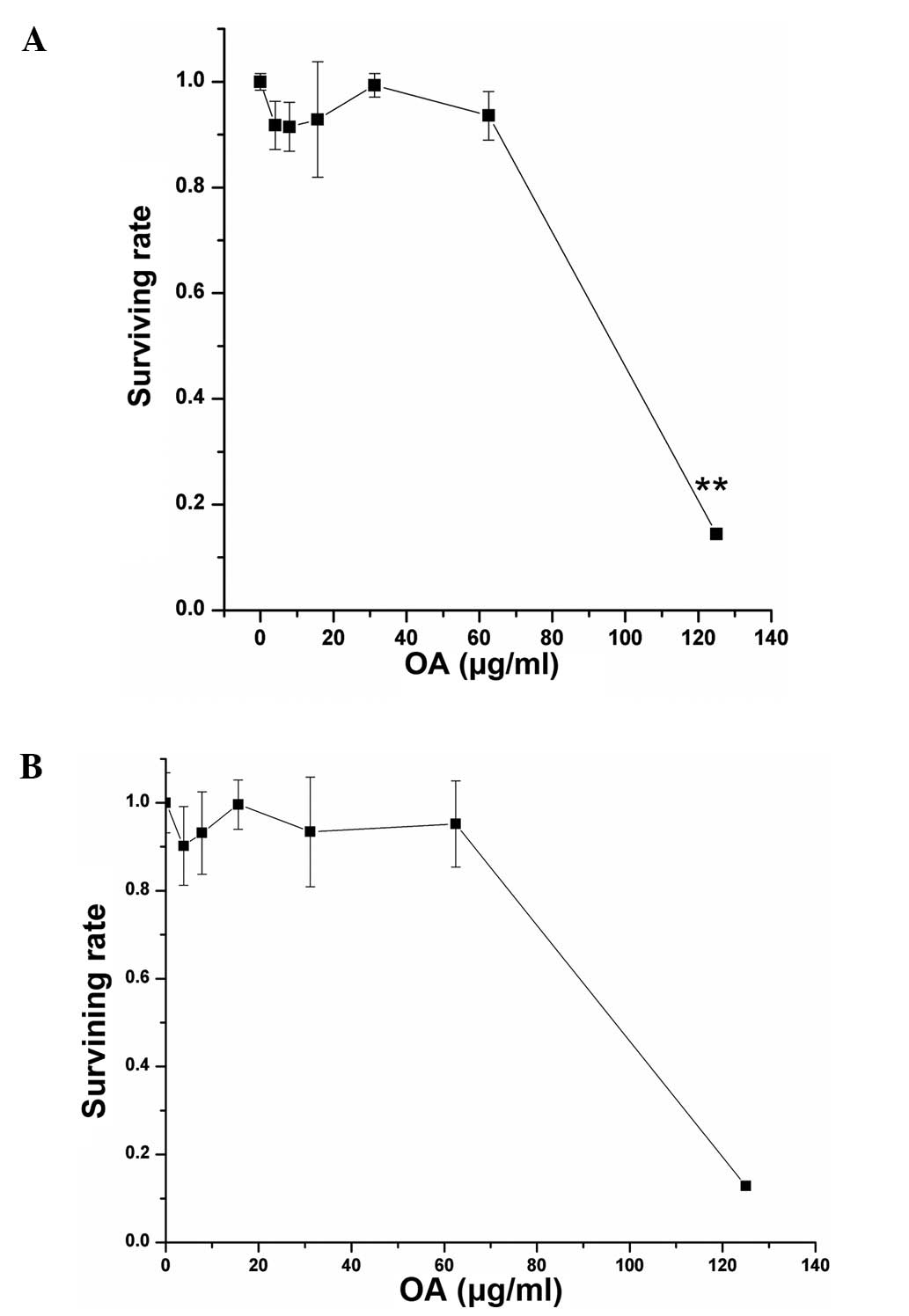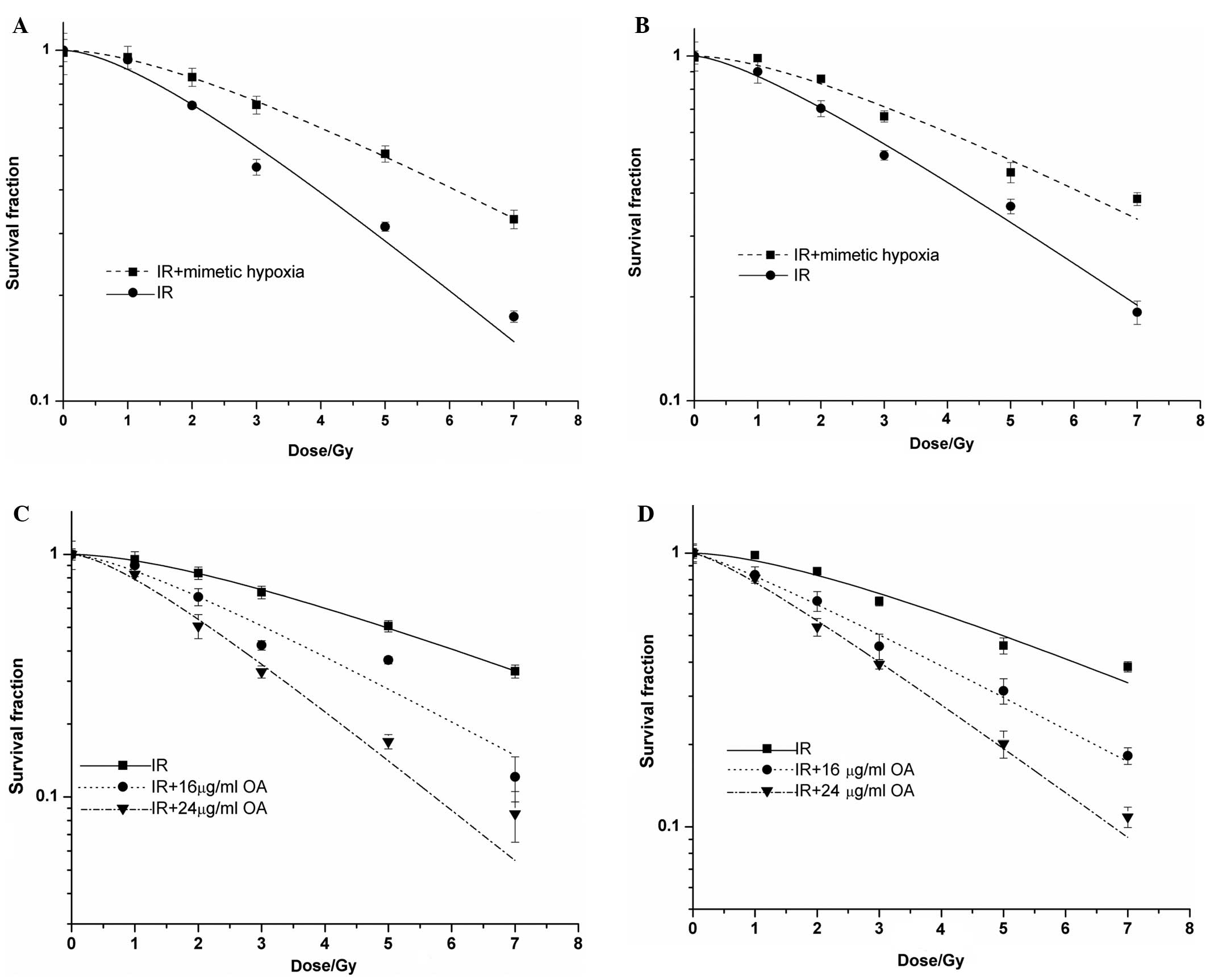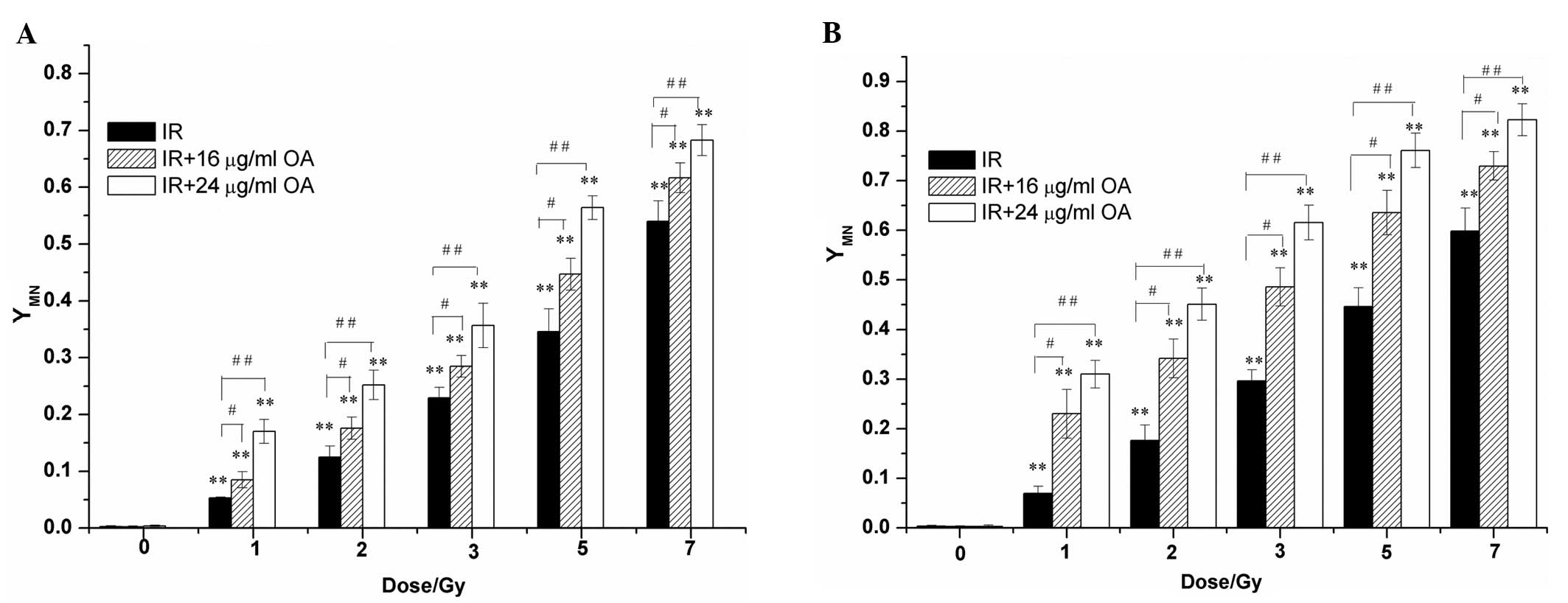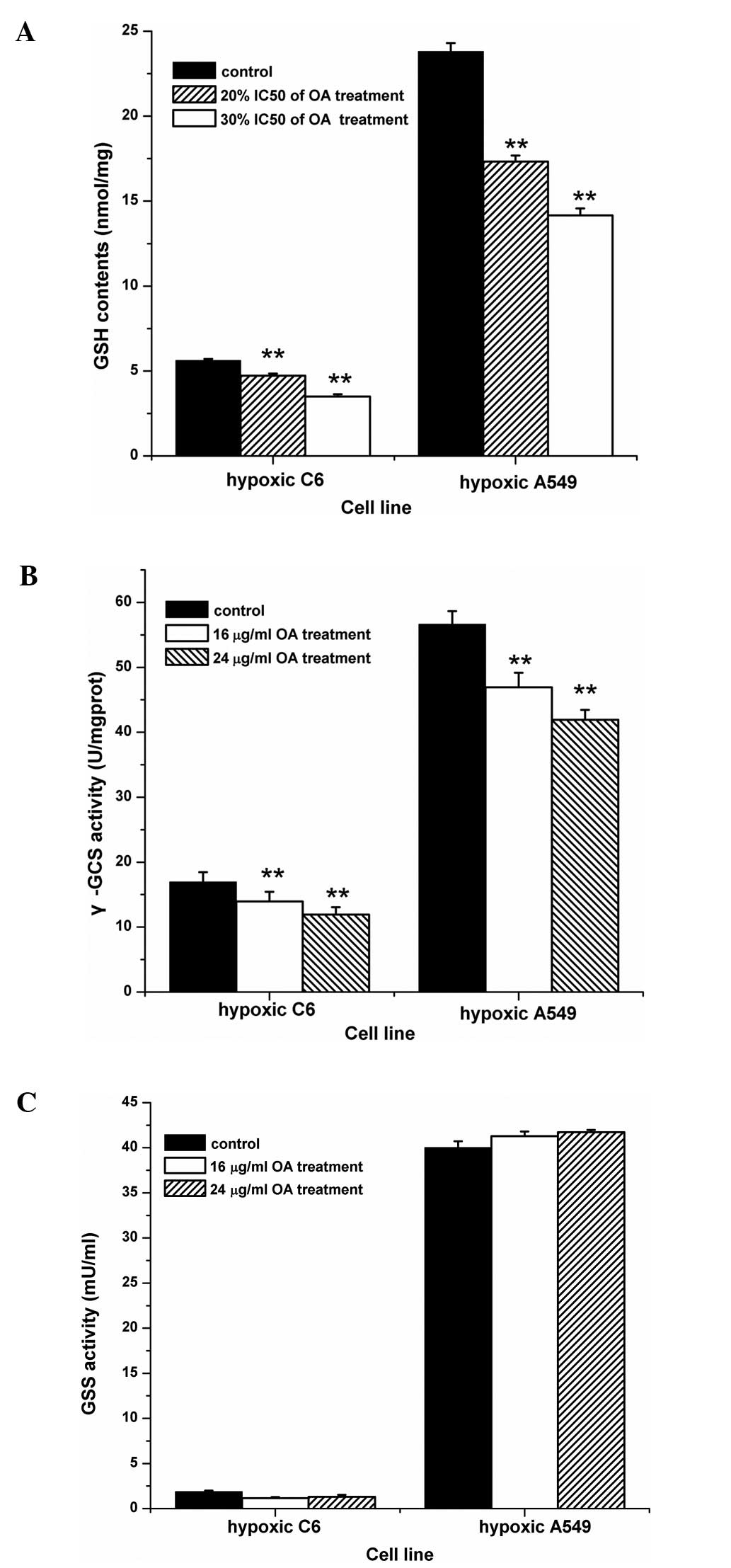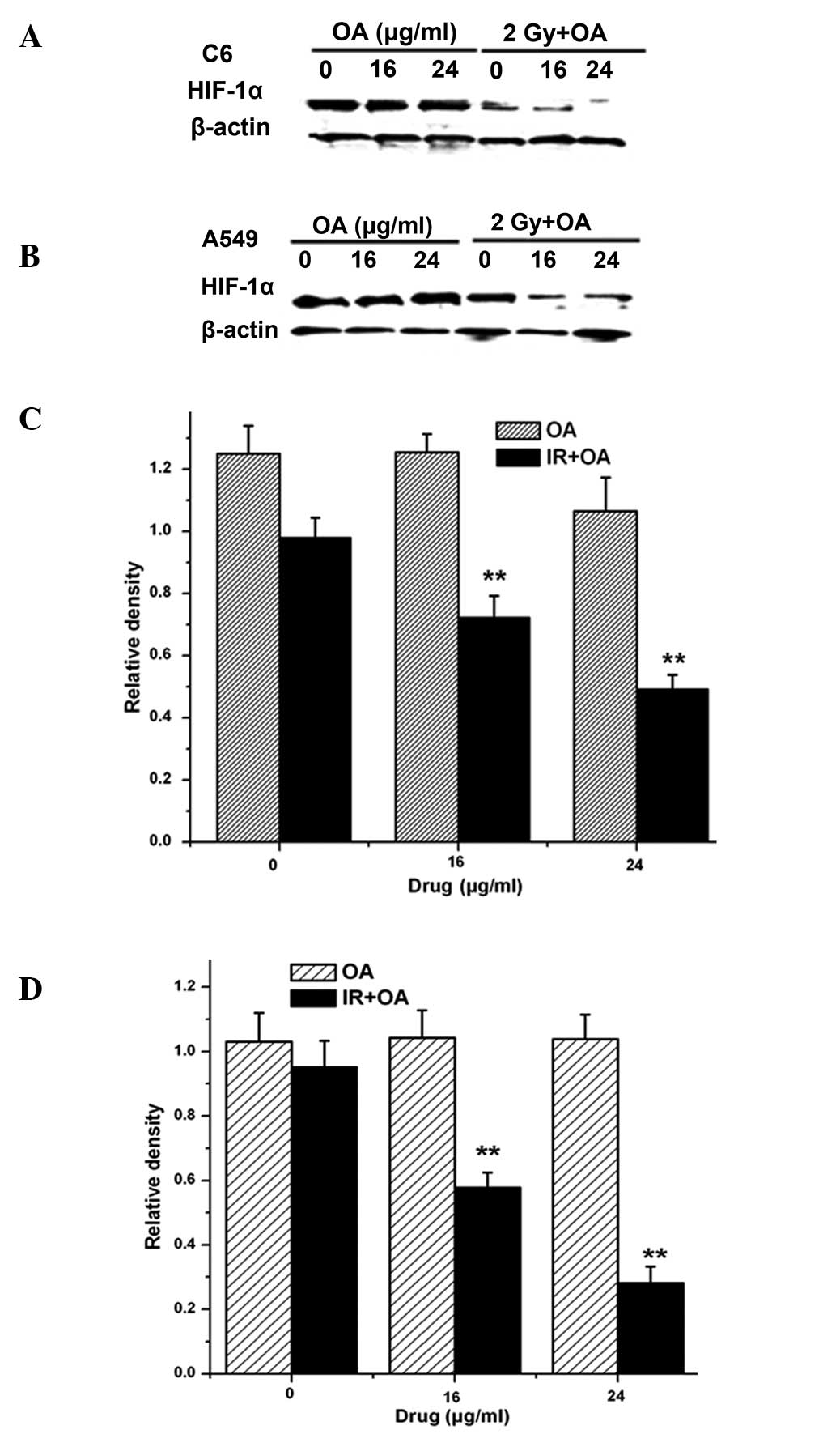|
1
|
Toustrup K, Sørensen BS, Alsner J and
Overgaard J: Hypoxia gene expression signatures as prognostic and
predictive markers in head and neck radiotherapy. Semin Radiat
Oncol. 22:119–127. 2012. View Article : Google Scholar : PubMed/NCBI
|
|
2
|
Bischoff P, Altmeyer A and Dumont F:
Radiosensitising agents for the radiotherapy of cancer: advances in
traditional and hypoxia targeted radiosensitisers. Expert Opin Ther
Pat. 19:643–662. 2009. View Article : Google Scholar : PubMed/NCBI
|
|
3
|
Tian J, Peehl DM, Zheng W and Knox SJ:
Anti-tumor and radiosensitization activities of the iron chelator
HDp44mT are mediated by effects on intracellular redox status.
Cancer Lett. 298:231–237. 2010. View Article : Google Scholar : PubMed/NCBI
|
|
4
|
Meijer TW, Kaanders JH, Span PN and
Bussink J: Targeting hypoxia, HIF-1, and tumor glucose metabolism
to improve radiotherapy efficacy. Clin Cancer Res. 18:5585–5594.
2012. View Article : Google Scholar : PubMed/NCBI
|
|
5
|
Karar J and Maity A: Modulating the tumor
microenvironment to increase radiation responsiveness. Cancer Biol
Ther. 8:1994–2001. 2009. View Article : Google Scholar : PubMed/NCBI
|
|
6
|
Min JW, Kim KI, Kim HA, et al:
INPP4B-mediated tumor resistance is associated with modulation of
glucose metabolism via hexokinase 2 regulation in laryngeal cancer
cells. Biochem Biophys Res Commun. 440:137–142. 2013. View Article : Google Scholar : PubMed/NCBI
|
|
7
|
Raffoul JJ, Banerjee S, Che M, et al: Soy
isoflavones enhance radiotherapy in a metastatic prostate cancer
model. Int J Cancer. 120:2491–2498. 2007. View Article : Google Scholar : PubMed/NCBI
|
|
8
|
Forman HJ, Zhang H and Rinna A:
Glutathione: overview of its protective roles, measurement, and
biosynthesis. Mol Aspects Med. 30:1–12. 2009. View Article : Google Scholar : PubMed/NCBI
|
|
9
|
Botta D, White CC, Vliet-Gregg P, et al:
Modulating GSH synthesis using glutamate cysteine ligase transgenic
and gene-targeted mice. Drug Metab Rev. 40:465–477. 2008.
View Article : Google Scholar : PubMed/NCBI
|
|
10
|
Catalano V, Turdo A, Di Franco S, Dieli F,
Todaro M and Stassi G: Tumor and its microenvironment: a
synergistic interplay. Semin Cancer Biol. 23:522–532. 2013.
View Article : Google Scholar : PubMed/NCBI
|
|
11
|
Saxena S, Shukla D, Saxena S, et al:
Hypoxia preconditioning by cobalt chloride enhances endurance
performance and protects skeletal muscles from exercise-induced
oxidative damage in rats. Acta Physiol. 200:249–263. 2010.
View Article : Google Scholar : PubMed/NCBI
|
|
12
|
Oh C, Dong Y, Harman C, Mighty HE,
Kopelman J and Thompson LP: Chronic hypoxia differentially
increases glutathione content and α-glutamyl cysteine synthetase
expression in fetal guinea pig organs. Early Hum Dev. 84:121–127.
2008.PubMed/NCBI
|
|
13
|
Ruiz-Gómez MJ, Souviron A,
Martínez-Morillo M and Gil L: P-glycoprotein, glutathione and
glutathione S-transferase increase in a colon carcinoma cell line
by colchicine. J Physiol Biochem. 56:307–312. 2000.PubMed/NCBI
|
|
14
|
Honda T, Coppola S, Ghibelli L, et al: GSH
depletion enhances adenoviral bax-induced apoptosis in lung cancer
cells. Cancer Gene Ther. 11:249–255. 2004. View Article : Google Scholar : PubMed/NCBI
|
|
15
|
Simons AL, Parsons AD, Foster KA, Orcutt
KP, Fath MA and Spitz DR: Inhibition of glutathione and thioredoxin
metabolism enhances sensitivity to perifosine in head and neck
cancer cells. J Oncol. 2009:5195632009. View Article : Google Scholar : PubMed/NCBI
|
|
16
|
Boivin A, Hanot M, Malesys C, Maalouf M,
Rousson R, Rodriguez-Lafrasse C and Ardail D: Transient alteration
of cellular redox buffering before irradiation triggers apoptosis
in head and neck carcinoma stem and non-stem cells. PLoS One.
6:e145582011. View Article : Google Scholar : PubMed/NCBI
|
|
17
|
Yang Y, Sun M, Wang L and Jiao B: HIFs,
angiogenesis, and cancer. J Cell Biochem. 114:967–974. 2013.
View Article : Google Scholar : PubMed/NCBI
|
|
18
|
Semenza GL: Hypoxia-inducible factors:
mediators of cancer progression and targets for cancer therapy.
Trends Pharmacol Sci. 33:207–214. 2012. View Article : Google Scholar : PubMed/NCBI
|
|
19
|
Pires IM, Olcina MM, Anbalagan S, et al:
Targeting radiation-resistant hypoxic tumour cells through ATR
inhibition. Br J Cancer. 107:291–299. 2012. View Article : Google Scholar : PubMed/NCBI
|
|
20
|
Lu H, Liang K, Lu Y and Fan Z: The
anti-EGFR antibody cetuximab sensitizes human head and neck
squamous cell carcinoma cells to radiation in part through
inhibiting radiation-induced upregulation of HIF-1α. Cancer Lett.
322:78–85. 2012.PubMed/NCBI
|
|
21
|
Staab A, Fleischer M, Loeffler J, et al:
Small interfering RNA targeting HIF-1α reduces hypoxia-dependent
transcription and radiosensitizes hypoxic HT 1080 human
fibrosarcoma cells in vitro. Strahlenther Onkol. 187:252–259.
2011.
|
|
22
|
Reisman SA, Aleksunes LM and Klaassen CD:
Oleanolic acid activates Nrf2 and protects from acetaminophen
hepatotoxicity via Nrf2-dependent and Nrf2-independent processes.
Biochem Pharmacol. 77:1273–1282. 2009. View Article : Google Scholar : PubMed/NCBI
|
|
23
|
Hsu HY, Yang JJ and Lin CC: Effects of
oleanolic acid and ursolic acid on inhibiting tumor growth and
enhancing the recovery of hematopoietic system postirradiation in
mice. Cancer Lett. 111:7–13. 1997. View Article : Google Scholar : PubMed/NCBI
|
|
24
|
Yang EJ, Lee W, Ku SK, Song KS and Bae JS:
Anti-inflammatory activities of oleanolic acid on HMGB1 activated
HUVECs. Food Chem Toxicol. 50:1288–1294. 2012. View Article : Google Scholar : PubMed/NCBI
|
|
25
|
Fujiwara Y, Komohara Y, Kudo R, Tsurushima
K, Ohnishi K, Ikeda T and Takeya M: Oleanolic acid inhibits
macrophage differentiation into the M2 phenotype and glioblastoma
cell proliferation by suppressing the activation of STAT3. Oncol
Rep. 26:1533–1537. 2011.PubMed/NCBI
|
|
26
|
Chakravarti B, Maurya R, Siddiqui JA, Bid
HK, Rajendran SM, Yadav PP and Konwar R: In vitro anti-breast
cancer activity of ethanolic extract of Wrightia tomentosa:
role of pro-apoptotic effects of oleanolic acid and urosolic acid.
J Ethnopharmacol. 142:72–79. 2012. View Article : Google Scholar : PubMed/NCBI
|
|
27
|
Yamai H, Sawada N, Yoshida T, et al:
Triterpenes augment the inhibitory effects of anticancer drugs on
growth of human esophageal carcinoma cells in vitro and
suppress experimental metastasis in vivo. Int J Cancer.
125:952–960. 2009. View Article : Google Scholar : PubMed/NCBI
|
|
28
|
Wang J, Yu M, Xiao L, Xu S, Yi Q and Jin
W: Radiosensitizing effect of oleanolic acid on tumor cells through
the inhibition of GSH synthesis in vitro. Oncol Rep.
30:917–924. 2013.PubMed/NCBI
|
|
29
|
White CC, Viernes H, Krejsa CM, Botta D
and Kavanagh TJ: Fluorescence-based microtiter plate assay for
glutamate-cysteine ligase activity. Anal Biochem. 318:175–180.
2003. View Article : Google Scholar : PubMed/NCBI
|
|
30
|
Lee ST and Scott AM: Hypoxia positron
emission tomography imaging with 18f-fluoromisonidazole.
Semin Nucl Med. 37:451–461. 2007. View Article : Google Scholar : PubMed/NCBI
|
|
31
|
Bulnes S, Bengoetxea H, Ortuzar N,
Argandoña EG, Garcia-Blanco A, Rico-Barrio I and Lafuente JV:
Angiogenic signalling pathways altered in gliomas: selection
mechanisms for more aggressive neoplastic subpopulations with
invasive phenotype. J Signal Transduct. 2012:5979152012. View Article : Google Scholar
|
|
32
|
Aravindan S, Natarajan M, Herman TS,
Awasthi V and Aravindan N: Molecular basis of ‘hypoxic’
breast cancer cell radio-sensitization: phytochemicals converge on
radiation induced Rel signaling. Radiat Oncol. 8:462013.
|
|
33
|
Singh-Gupta V, Zhang H, Banerjee S, Kong
D, Raffoul JJ, Sarkar FH and Hillman GG: Radiation-induced HIF-1α
cell survival pathway is inhibited by soy isoflavones in prostate
cancer cells. Int J Cancer. 124:1675–1684. 2009.
|
|
34
|
Ji Z, Yang G, Shahzidi S, Tkacz-Stachowska
K, Suo Z, Nesland JM and Peng Q: Induction of hypoxia-inducible
factor-1α overexpression by cobalt chloride enhances cellular
resistance to photodynamic therapy. Cancer Lett. 244:182–189.
2006.
|
|
35
|
Piret JP, Lecocq C, Toffoli S, Ninane N,
Raes M and Michiels C: Hypoxia and CoCl2 protect HepG2
cells against serum deprivation- and t-BHP-induced apoptosis: a
possible anti-apoptotic role for HIF-1. Exp Cell Res. 295:340–349.
2004.PubMed/NCBI
|
|
36
|
Jin W, Wang J, Xu S, Xiao L, Chen G, Zhang
W and Li J: Radioprotective effect on HepG2 cells of low
concentrations of cobalt chloride: induction of hypoxia-inducible
factor-1 alpha and clearance of reactive oxygen species. J Radiat
Res. 54:203–209. 2013. View Article : Google Scholar : PubMed/NCBI
|
|
37
|
Law PC, Auyeung KK, Chan LY and Ko JK:
Astragalus saponins downregulate vascular endothelial growth factor
under cobalt chloride-stimulated hypoxia in colon cancer cells. BMC
Complement Altern Med. 12:1602012. View Article : Google Scholar
|
|
38
|
Brusevold IJ, Husvik C, Schreurs O,
Schenck K, Bryne M and Søland TM: Induction of invasion in an
organotypic oral cancer model by CoCl2, a hypoxia
mimetic. Eur J Oral Sci. 118:168–176. 2010. View Article : Google Scholar : PubMed/NCBI
|
|
39
|
Donnelly ET, Liu Y, Paul TK and Rockwell
S: Effects of motexafin gadolinium on DNA damage and X-ray-induced
DNA damage repair, as assessed by the Comet assay. Int J Radiat
Oncol Biol Phys. 62:1176–1186. 2005. View Article : Google Scholar : PubMed/NCBI
|
|
40
|
Vukovic V, Nicklee T and Hedley DW:
Differential effects of buthionine sulphoximine in hypoxic and
non-hypoxic regions of human cervical carcinoma xenografts.
Radiother Oncol. 60:69–73. 2001. View Article : Google Scholar : PubMed/NCBI
|
|
41
|
Kashino G, Prise KM, Suzuki K, et al:
Effective suppression of bystander effects by DMSO treatment of
irradiated CHO cells. J Radiat Res. 48:327–333. 2007. View Article : Google Scholar : PubMed/NCBI
|
|
42
|
Thierens H and Vral A: The micronucleus
assay in radiation accidents. Ann Ist Super Sanita. 45:260–264.
2009.PubMed/NCBI
|
|
43
|
Romm H, Barnard S, Boulay-Greene H, et al:
Laboratory intercomparison of the cytokinesis-block micronucleus
assay. Radiat Res. 180:120–128. 2013. View Article : Google Scholar : PubMed/NCBI
|
|
44
|
Tokuzumi S, Hori M, Monobe M, Hosoi Y and
Kojima S: Effect of nitric oxide on α-ray-induced micronucleus
frequency in RAW264.7 cells. Radiat Res. 164:723–732. 2005.
|
|
45
|
Kumar M, Meena P, Verma S, Kumar M and
Kumar A: Anti-tumour, anti-mutagenic and chemomodulatory potential
of Chlorophytum borivilianum. Asian Pac J Cancer Prev.
11:327–334. 2010.PubMed/NCBI
|
|
46
|
Hanot M, Boivin A, Malésys C, et al:
Glutathione depletion and carbon ion radiation potentiate clustered
DNA lesions, cell death and prevent chromosomal changes in cancer
cells progeny. PLoS One. 7:e443672012. View Article : Google Scholar : PubMed/NCBI
|
|
47
|
Sendoel A, Kohler I, Fellmann C, Lowe SW
and Hengartner MO: HIF-1 antagonizes p53-mediated apoptosis through
a secreted neuronal tyrosinase. Nature. 465:577–583. 2010.
View Article : Google Scholar : PubMed/NCBI
|
|
48
|
Indovina P, Ferrante A, Rainaldi G and
Santini MT: Hypoxia and ionizing radiation: changes in adhesive
properties and cell adhesion molecule expression in MG-63
three-dimensional tumor spheroids. Cell Commun Adhes. 13:185–198.
2006. View Article : Google Scholar
|
|
49
|
Lan KL, Lan KH, Sheu ML, et al: Honokiol
inhibits hypoxia-inducible factor-1 pathway. Int J Radiat Biol.
187:579–590. 2011. View Article : Google Scholar : PubMed/NCBI
|
|
50
|
Lin CC, Huang CY, Mong MC, Chan CY and Yin
MC: Antiangiogenic potential of three triterpenic acids in human
liver cancer cells. J Agric Food Chem. 59:755–762. 2011. View Article : Google Scholar : PubMed/NCBI
|















